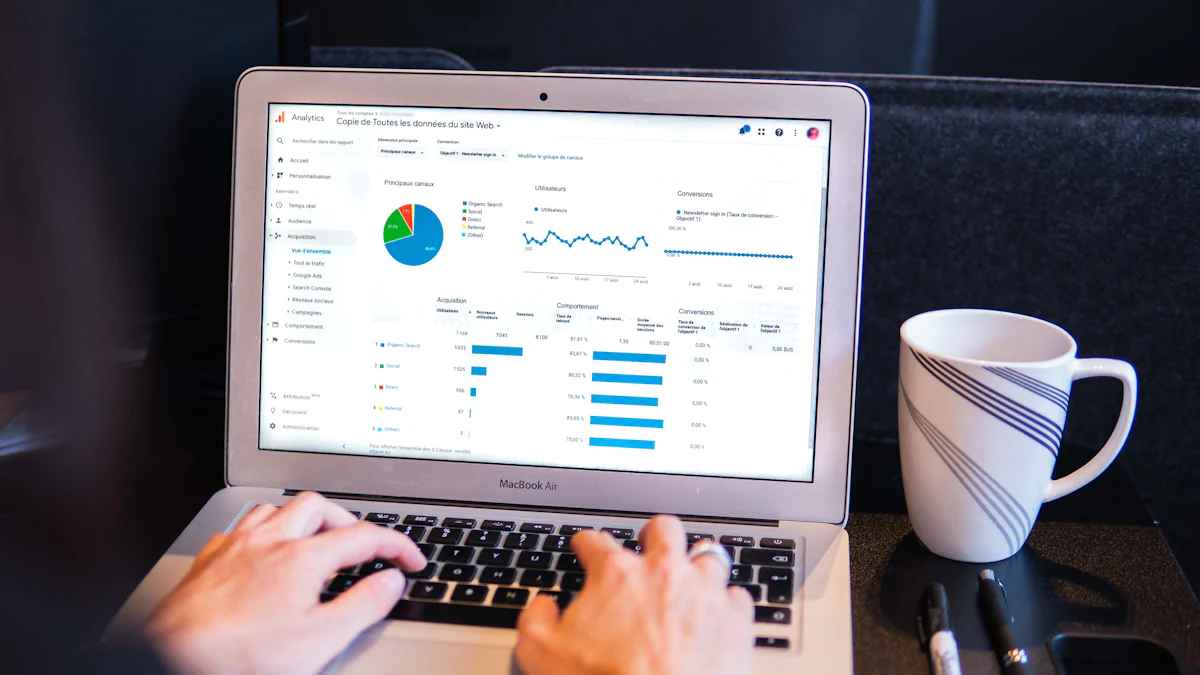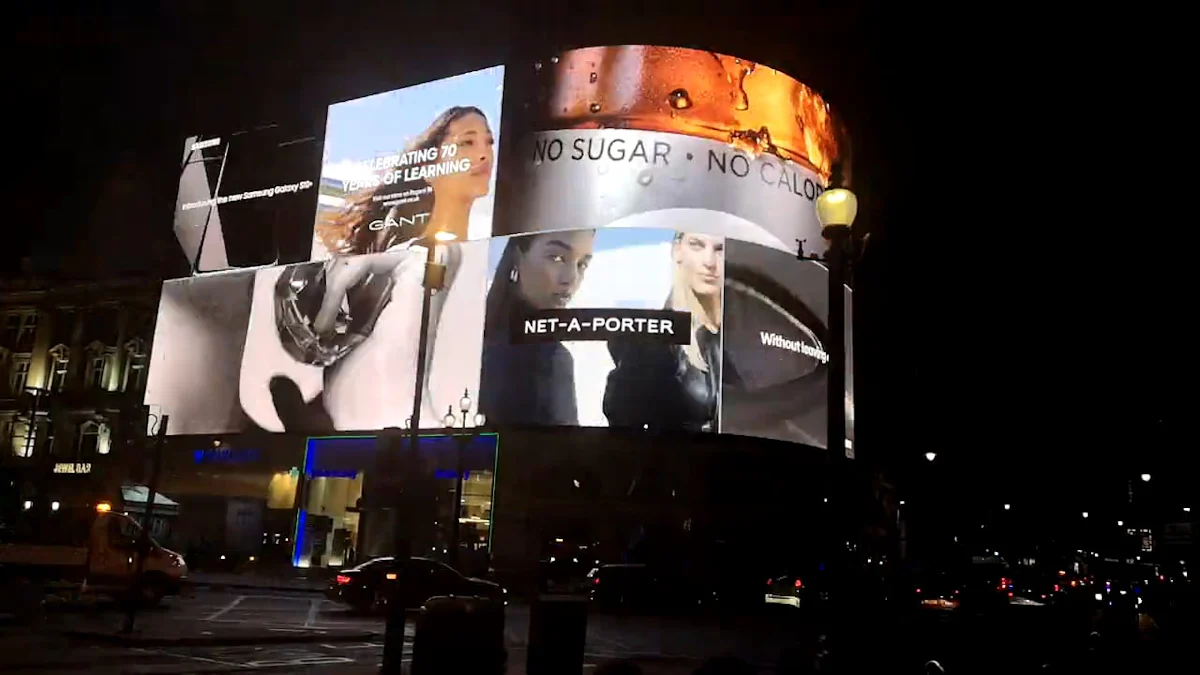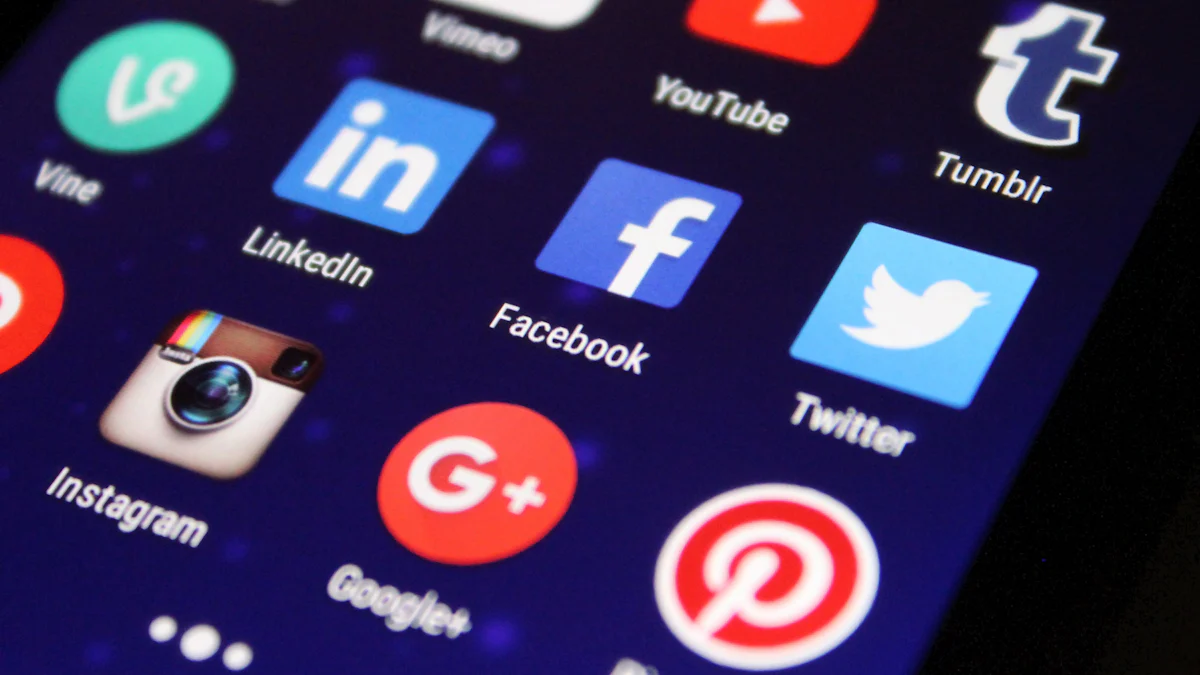25 PPC Ads Statistics Shaping Advertising in 2025

Pay-per-click advertising continues to transform how businesses connect with their audiences. In 2025, ppc ads will play a critical role in shaping digital strategies. By leveraging data-driven insights, you can unlock powerful benefits:
📊 Personalize ads to match customer preferences and behaviors.
🎯 Target users who show interest in specific products, boosting conversions.
🔄 Adjust campaigns in real-time to maximize performance and reduce wasted budget.
🧪 Use A/B testing to identify the most effective ad versions.
💡 Predict trends and plan timely campaigns to stay ahead of competitors.
PPC predictions show that understanding customer behavior and optimizing your budget will be essential. With the right strategies, you can achieve better ROI and long-term success in ppc advertising.
Key Takeaways
Personalize your PPC ads by leveraging customer data to match preferences and behaviors, enhancing engagement and conversion rates.
Utilize A/B testing to identify the most effective ad versions, ensuring your campaigns are optimized for maximum performance.
Stay ahead of competitors by predicting trends and planning timely campaigns, allowing you to capitalize on emerging opportunities.
Embrace AI and automation tools to streamline your PPC management, saving time while improving targeting and return on ad spend.
Focus on mobile optimization, as nearly 52% of PPC clicks come from mobile users, ensuring your ads reach a broader audience effectively.
Platform-Specific PPC Ads Insights
Google Ads in 2025
Market share and dominance
Google continues to dominate the pay-per-click landscape in 2025. It holds an impressive 93.51% of the global search engine market share, making it the go-to platform for advertisers. 📊 Around 33% of mobile ad spending flows directly to Google Ads, showcasing its stronghold in mobile advertising.
This dominance ensures that Google remains a cornerstone of performance marketing strategies. Its vast reach and advanced targeting capabilities allow you to connect with diverse audiences effectively.
Trends in average CPC and ROI
In 2025, Google Ads campaigns benefit from AI advancements that enhance precision targeting and personalization. These innovations improve campaign efficiency and boost return on ad spend (ROAS). 🔍 Automation tools like Google’s Target CPA streamline bid adjustments and ad placements, saving time and optimizing results.
To stay competitive, you should audit your campaigns regularly and align them with emerging PPC trends. Leveraging AI tools and first-party audience data can significantly improve your click-through rate and overall performance.
Amazon PPC Ads
Growth in e-commerce ad spending
Amazon continues to thrive as a leader in e-commerce advertising. By 2025, its ad revenue is expected to grow by 19.4%, reaching $47.52 billion. 📈 This growth highlights the increasing importance of Amazon PPC ads for businesses aiming to capture online shoppers' attention.
Year | Expected Ad Revenue Growth | Total Ad Revenue |
|---|---|---|
2025 | 19.4% | $47.52 billion |
Conversion rates and performance benchmarks
Amazon PPC ads boast an average conversion rate of 9.96% in 2025. This high rate reflects the platform's ability to drive sales effectively across various niches. To maximize your results, focus on optimizing product listings and using advanced targeting options to reach the right audience.
Bing and Alternative Platforms
Niche opportunities in pay-per-click advertising
Bing and other alternative platforms offer unique advantages for PPC advertising. Bing Ads, for instance, provides a lower cost per click compared to Google, allowing you to stretch your budget further. 💰 Its user base skews older, with the most common age group being 45-54, making it ideal for brands targeting this demographic.
Performance metrics for smaller platforms
Microsoft Advertising, formerly Bing Ads, holds a significant market share in specific demographics. This makes it a valuable addition to your PPC strategy. By diversifying your campaigns across smaller platforms, you can achieve better budget efficiency and tap into less competitive markets.
Key PPC Performance Metrics
Click-Through Rates (CTR)
Industry benchmarks for CTR in 2025
Understanding the click-through rate benchmarks helps you evaluate your campaign's performance. In 2025, the CTR for different Google SERP features varies significantly:
Google SERP Feature | CTR |
|---|---|
Snippet | |
AI Overview | 9.4% (1st) |
#1 Organic Result | 39.8% |
Ad Result | 1.2 – 2.1% |
Local Pack Position #1 | 17.6% |
Local Pack Position #2 | 15.4% |
Local Pack Position #3 | 15.1% |
For PPC ads, achieving a CTR of 1.2% to 2.1% is typical. These statistics highlight the importance of optimizing your ads to stand out in competitive spaces.
Strategies to improve CTR
Boosting your click-through rate requires strategic planning. You can:
🎯 Create irresistible headlines to grab attention.
✍️ Optimize ad copy to match user intent and include clear calls to action.
📈 Use ad extensions to provide additional information and improve visibility.
🧪 Conduct A/B testing to identify the most effective ad versions.
👥 Target the right audience to ensure relevance.
🔑 Restrict keywords with longer-tail options to attract specific users.
These tactics align with current PPC trends and help you achieve better results in your campaigns.
Cost Per Click (CPC)
Trends in CPC across platforms
In 2025, CPC continues to rise across major platforms like Google and Facebook. Increased competition and evolving consumer behavior drive this trend. For example:
Google’s average CPC rose by 10% from 2023 to 2024.
Certain industries experienced a 24.6% year-over-year increase.
Smaller businesses face challenges due to limited budgets and higher CPCs.
Regulatory changes also impact CPC by limiting data collection, making ad targeting more complex.
Managing rising CPCs effectively
You can manage rising CPCs by adopting these strategies:
🧩 Segment your audience to tailor campaigns for specific groups.
📍 Optimize ad placements to balance cost and visibility.
🌟 Improve Quality Score by enhancing ad relevance and landing page experience.
🔍 Expand keyword lists with long-tail keywords and varied match types.
🚫 Use negative keywords to filter irrelevant traffic.
📊 Utilize remarketing to re-engage visitors who didn’t convert.
These methods ensure your campaigns remain cost-effective while maintaining strong performance marketing outcomes.
Conversion Rates
Average conversion rates for PPC ads
Conversion rates are a critical metric for evaluating PPC success. In 2025, the average conversion rate for PPC ads is approximately 3.75%. However, platforms like Amazon outperform others with rates nearing 9.96%. These statistics emphasize the importance of platform selection and campaign optimization.
Tips for boosting conversions in 2025
To improve your conversion rates, consider these tips:
⏰ Use dayparting to display ads during peak performance times.
👥 Leverage lookalike audiences to target users similar to your best customers.
🔄 Run remarketing campaigns to re-engage non-converting visitors.
🎥 Incorporate video ads to capture attention quickly.
📊 Track data to identify what works and refine your strategy.
🕵️♂️ Analyze competitors to uncover new opportunities.
By implementing these techniques, you can maximize your ROAS and achieve better results in your pay-per-click campaigns.
Mobile and Social Media PPC Trends

Mobile PPC Ads
Share of mobile traffic in pay-per-click campaigns
Mobile devices dominate PPC campaigns in 2025. Nearly 52% of all PPC ad clicks come from mobile users. This trend highlights the growing importance of optimizing your campaigns for mobile traffic. With more users relying on smartphones for browsing and shopping, mobile PPC ads offer a significant opportunity to reach your audience effectively.
Mobile-specific ad formats and their effectiveness
Mobile advertising requires tailored strategies to maximize results. Two primary approaches include web campaigns targeting users on mobile websites and app campaigns engaging users within applications. Each format offers unique benefits. For example, web campaigns allow you to capture users searching for products, while app campaigns focus on retaining and converting app users.
Strengths | Targeting Options | Ad Formats | |
|---|---|---|---|
Facebook Ads | Massive reach, granular targeting | Interests, demographics, behaviors | Image, video, carousel |
Instagram Ads | Visually-driven, highly engaged users | Lookalike audiences, behaviors | Stories, reels, videos |
TikTok Ads | Creative short-form video content | Demographics, in-app behavior | In-feed ads, brand takeover |
Social Media PPC Ads
Facebook and Instagram ad performance
Facebook and Instagram remain top platforms for PPC ads in 2025. Facebook’s average cost per click (CPC) is $0.94, while Instagram’s CPC ranges from $0.50 to $0.95. Instagram Stories ads cost slightly more, with a CPC of $1.83. These platforms offer diverse ad formats, including image, video, and carousel ads, making them ideal for engaging users.
TikTok and emerging platforms for PPC
TikTok’s video-first approach allows you to connect with younger audiences creatively. Transitioning to TikTok Search Ads is seamless for brands already producing video content. Other platforms like Pinterest and Snapchat also provide unique opportunities. Pinterest excels in e-commerce, while Snapchat offers interactive, mobile-first ads.
Platform | Unique Opportunities |
|---|---|
TikTok | Creative video ads appealing to younger users |
Excels for e-commerce | |
Snapchat | Interactive ads with a mobile-first experience |
Video Ads in PPC
Growth and engagement of video ads
Video ads continue to dominate PPC campaigns. By 2025, video ad spending will exceed $300 billion, reflecting their growing importance. Video content drives higher engagement, making it a powerful tool for capturing attention and boosting conversions.
ROI for video ad formats in 2025
Video ads deliver impressive ROI. According to Wyzowl, 94% of marketers believe video improves user understanding of products. This format enhances engagement and helps you achieve better ROAS. As video ads grow in popularity, incorporating them into your PPC strategy becomes essential for staying competitive.
Emerging Trends in Pay-Per-Click Advertising

AI and Automation in PPC
Role of AI in optimizing campaigns
AI is revolutionizing how you manage ppc campaigns. It simplifies complex tasks and enhances efficiency.
🛠️ Automation now handles bid adjustments and ad placements, optimizing campaigns in real-time.
🎯 Smart bidding techniques improve targeting by analyzing audience behavior and conversion likelihood.
✍️ AI generates ad copy and provides insights into customer preferences, helping you craft more effective ads.
For example, tools like Google’s Performance Max streamline campaign management. They use AI-powered analytics to reveal trends in customer behavior, enabling better targeting and higher roas.
Popular automation tools and their impact
Automation tools are essential for ppc success in 2025. They leverage AI and machine learning to optimize campaigns. Popular options include:
🤖 Helium 10: Offers AI-driven optimization for managing ppc ads.
📊 Sellics/Perpetua: Automates campaigns with customizable rules.
💡 Teikametrics: Features automated bidding and campaign optimization.
🚀 Zon.Tools: Improves product visibility through automation.
Google Ads also enhances its automation features with smart bidding and Performance Max campaigns. These tools save time and improve campaign performance.
Voice Search and PPC Ads
Adoption of voice search in 2025
Voice search is becoming a significant trend. By 2025, around 20.5% of internet users worldwide will rely on voice search. This shift changes how users interact with search engines and impacts your ppc strategies.
Adapting PPC strategies for voice search
To adapt your campaigns for voice search, focus on natural language and conversational phrases.
🗣️ Use long-tail keywords that mimic everyday speech.
📍 Optimize for local intent by targeting location-based queries.
📱 Ensure mobile compatibility for landing pages to enhance user experience.
🏆 Aim for featured snippets to secure the top position in search results.
You should also review search queries to identify voice search triggers. Tailor your ad copy to answer user questions directly. These strategies help you stay ahead in the evolving ppc landscape.
Privacy and Data Changes
Impact of privacy regulations on PPC
Privacy regulations are reshaping ppc advertising. The transition to a cookie-less future forces you to rethink data collection methods.
🔒 Contextual targeting is becoming more common, placing ads based on webpage content instead of user profiles.
📉 The loss of conversion tracking due to user opt-out options may reduce perceived campaign performance.
👥 Audience targeting and remarketing campaigns face challenges as users must actively consent to data collection.
Advertisers now rely more on first-party data, such as website interactions and email subscriptions, to define target audiences. Privacy-preserving technologies ensure user confidentiality while maintaining ad effectiveness.
Strategies to navigate data limitations
You can overcome data limitations by leveraging first-party data and innovative tracking methods.
📋 Review assets like CRM data and e-commerce platforms for optimization opportunities.
📝 Add optional surveys to collect first-party data for audience segmentation.
🔄 Track offline conversions to enhance digital conversion data.
🌐 Use server-side tracking for better campaign performance measurement.
Brands that transition to first-party data models often see improved targeting precision. For instance, focusing on email sign-ups and surveys can increase your email marketing list and boost ppc campaign results.
Visual Search Ads
Growth of visual search in PPC campaigns
Visual search is transforming how users interact with online content. By 2025, this technology is expected to experience significant growth, driven by advancements in artificial intelligence. Visual search allows users to upload images or use their device cameras to find products, making it a game-changer for e-commerce and PPC campaigns.
Advertisers are increasingly adopting visual search to better understand customer purchase journeys and search intent. This technology helps you identify what customers want based on the images they search for, enabling you to create more targeted ads. For example, a user searching for a specific pair of sneakers can instantly see similar products available for purchase. This seamless experience boosts engagement and drives higher conversion rates.
Aspect | Description |
|---|---|
Growth of Visual Search Ads | Significant growth is expected in 2025 due to advancements in AI technology. |
Customer Understanding | Advertisers will better understand customer purchase journeys and search intent. |
AI-driven advancements in visual search
Artificial intelligence plays a crucial role in enhancing visual search capabilities. AI-powered algorithms analyze images with remarkable accuracy, identifying patterns, colors, and even brand logos. These advancements allow you to deliver highly relevant ads to users based on their visual queries.
AI also enables dynamic ad creation tailored to individual preferences. For instance, if a user searches for a red dress, AI can generate personalized ads showcasing similar dresses in various styles and price ranges. This level of customization improves user satisfaction and increases the likelihood of conversions.
Incorporating visual search into your PPC strategy can also complement other formats like video ads. By combining visual search with engaging video content, you can create a more immersive shopping experience. As AI continues to evolve, expect visual search to become an indispensable tool for staying competitive in the digital advertising landscape.
The PPC landscape in 2025 offers immense opportunities for advertisers who stay informed and adaptable. Key statistics highlight its potential:
Statistic | Value |
|---|---|
PPC Traffic Conversion Rate Advantage | 50% |
Brand Awareness Boost | 80% |
Mobile PPC Clicks | 52% |
📈 Programmatic PPC and AI-driven optimization are reshaping campaign management.
🎥 Video ads and voice search optimization are driving engagement.
🔒 Privacy-compliant targeting ensures ethical and effective advertising.
PPC ads empower you to connect with your ideal audience quickly and efficiently. By leveraging data and adopting innovative strategies, you can maximize ROI and stay ahead in this competitive space.
FAQ
What is the average ROI for PPC campaigns in 2025?
The average ROI for PPC campaigns in 2025 is 200%. This means for every dollar you spend, you can expect to earn two dollars in return. PPC remains one of the most effective digital advertising strategies.
How can you improve your PPC click-through rate (CTR)?
You can improve CTR by:
🎯 Using targeted keywords.
📈 Adding ad extensions for extra information.
🧪 Testing different ad versions to find what works best.
Why is mobile PPC important in 2025?
Mobile PPC is crucial because 52% of all PPC clicks come from mobile users. Optimizing for mobile ensures you reach a larger audience and provide a seamless experience for smartphone users.
What role does AI play in PPC advertising?
AI automates tasks like bid adjustments and audience targeting. It analyzes user behavior to optimize campaigns in real-time. Tools like Google’s Performance Max help you save time and improve results.
How do privacy regulations affect PPC campaigns?
Privacy regulations limit data collection, making targeting harder. You can adapt by using first-party data, contextual targeting, and privacy-compliant tracking methods to maintain campaign effectiveness.
See Also
Exploring B2B Content Marketing Trends for 2024
Key SEO Predictions to Monitor in 2024
Analyzing Blog Trends 2024's Influence on Digital Marketing

